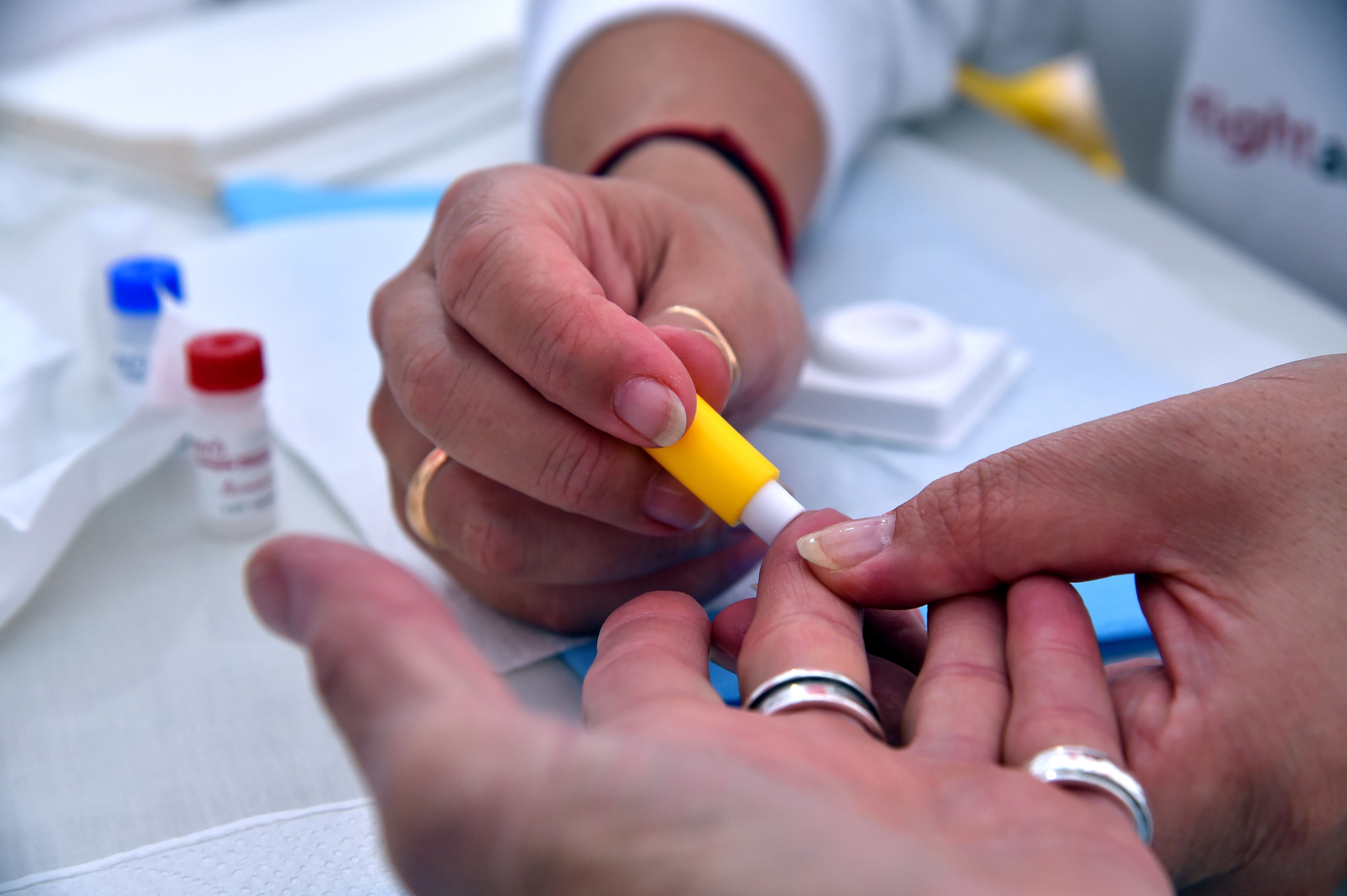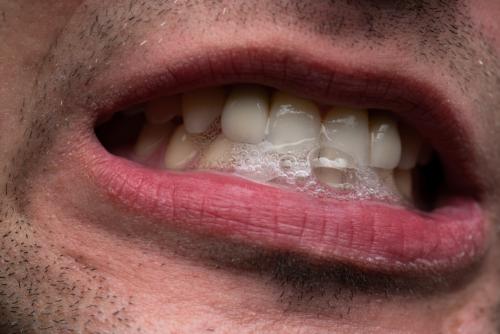The effects of diabetes on the skin

Diabetes is characterized by high blood sugar levels, but often asymptomatic, remains undetected. In 50% of cases, people in the prediabetes stage develop this disease over the next ten years. According to the Board of Directors of the European Diabetes Association (EASD), 11. 6% of the population suffers from diabetes and 16% of prediabettes. Over 30% of patients with diabetes have a complication of this disease in the skin. If you suffer from this condition, it is important to be aware of the problems that may occur and to consult your doctor before the problem gets out of control.
Bactericidal or fungal infections are common in unbalanced diabetes. They are usually more severe and more resistant to treatment than the rest of the population. Dermatologist Proca Ancuta explains for the CSID how it manifests and how to control the skin conditions caused by diabetes. Furunculosis has an increased incidence in diabetics, and this disease is a factor favoring the development of ecstasy, recurrent erosipea and gangrene. Cutaneous mucosal candidiasis, erythrasma (infection located in skin folds) and pitiriasis versicolor (skin mycoses that change the color of the skin in affected areas.
) Are also common fungal infections encountered in diabetics. Their treatment is conditioned by balancing the disease. Diabetic foot is encountered in 1-5% of patients, skin and subcutaneous tissue (perforated plantar), nerves (diabetic neuropathy), blood vessels (diabetes micro and macroangiopathy) and bones (diabetic osteoarthropathy). The most serious chronic complication is diabetic gangrene that occurs with ischemia, neuropathy and infection. Frequently, it leads to amputation.
Lipoid necrosis, more common among women, is a dermatosis predominantly located in the calves. It consists of the appearance of oval plaques with atrophic center and yellow-colored telangiectasia (superficial blood vessels) and brown-violet, painless margins. In some cases, these lesions may ulcerate. Generalized annular granuloma occurs predominantly in women, generally in those over 40 years of age, and is clinically manifested by multiple, asymptomatic, bumpy, and hypopigmented centers. Diabetic dermatopathy or Insulin lipodystrophy may be present in three forms: atrophic lipodistrophy, clinically manifested by atrophic fat at the injection site of insulin or even at a distance, hypertrophic lipodistrophy with the emergence of a prominent, non-painful mass and mixed lipodystrophy when the two forms .
Acanthozis nigricans, associated with hyperinsulinism (excessive insulin secretion), and obesity, are clinically manifested by brown-black papillomatous plaques located in the flexion, abdominal, throat, throat, sometimes mucosal areas. Eruptive xanthoma occurs when diabetes is uncontrolled and the patient has high levels of glucose in the blood and hypercholesterolemia. Clinically, they have the appearance of firm, pink-yellow papules, with pallid, sometimes pruritic. They are located on the extension limbs and the buttocks. They are usually resolved by balancing diabetes.
Diabetic scleraemia is a rare skin problem that affects people with old diabetes who also suffer from other complications (renal, cardiac or neurological) of the disease already present. The condition causes a thickening of the skin on the face, neck and chest. The onset is insidious and is often preceded by erythema. Digital sclerosis is manifested by changes in the joints and teeth of the hands and feet. The skin becomes thick, waxy and tight.
The rigidity of the fingers and the large joints of the body may also appear. It may be accompanied by Dupuytren contracture or carpal tunnel syndrome, which are also more common in diabetics than in the rest of the population. Vitiligo is a skin condition commonly associated with type 1 diabetes. Melanocytes that form melanin are destroyed, resulting in the appearance of some faded skin portions. Vitiligo lesions are asymptomatic, can be located anywhere in the body, and are generally symmetrical.
Diabetic bullosa is a rare dermatosis that is manifested by the appearance of large, fluid-filled bubbles located at the extremities. Usually, they are painless, unhealthy and heal without the need for treatment within 2-5 weeks. Localized or generalized pruritus (itching), flat lichen and psoriasis are also more common among diabetics than in the rest of the population. Keeping diabetes under control is the most important factor in preventing these skin problems. Follow your doctor's advice on nutrition, exercise and medication.
Keep blood sugar within the recommended range. Proper skin care can also help reduce the risk of skin problems. .
Source : csid.ro
Views : 3394
Popular Article
- (photo) Nude becomes art.
Posted: 2018-03-17, 9815 views.
- The harmful effects of air conditioning on the skin
Posted: 2017-06-08, 8526 views.
- 3 causes of dyed hair discoloration
Posted: 2017-06-15, 8408 views.
- Why early puberty occurs in girls: symptoms, favors, diagnosis and treatment
Posted: 2017-10-24, 8253 views.
- Good or bad skin treatments in the hot season
Posted: 2017-06-07, 7981 views.
Recommendations
- (photo) Nude becomes art.
Posted: 2018-03-17, 9815 views.
- The harmful effects of air conditioning on the skin
Posted: 2017-06-08, 8526 views.
- 3 causes of dyed hair discoloration
Posted: 2017-06-15, 8408 views.
- Good or bad skin treatments in the hot season
Posted: 2017-06-07, 7981 views.
- Risks of practicing sports on hot days
Posted: 2017-06-12, 7557 views.
 4 effective ingredients in the fight against acne.
4 effective ingredients in the fight against acne. How to get rid of hiccups fast
How to get rid of hiccups fast The wheat bran diet: the secret of lost pounds as if by magic
The wheat bran diet: the secret of lost pounds as if by magic The recipe that will sweeten your soul this weekend!
The recipe that will sweeten your soul this weekend!  Is it dangerous or not to refreeze meat after thawing it?
Is it dangerous or not to refreeze meat after thawing it?  The unusual sign of diabetes indicated by saliva.
The unusual sign of diabetes indicated by saliva. What to drink to boost your immune system.
What to drink to boost your immune system. 10 foods that help you never age.
10 foods that help you never age. What actually happens in your body if you drink a cup of coffee for breakfast
What actually happens in your body if you drink a cup of coffee for breakfast 5 surprising benefits of chia seeds
5 surprising benefits of chia seeds